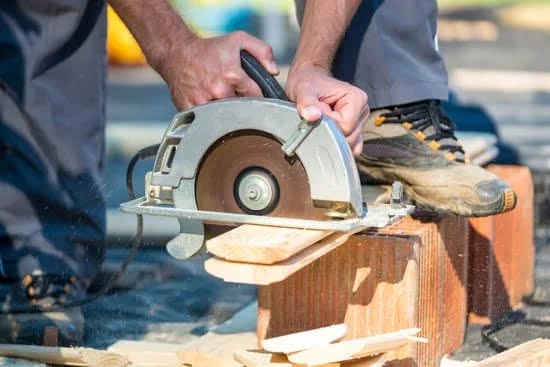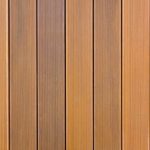Woodworking is a craft that allows individuals to create beautiful and functional pieces using their hands and a few essential tools. One aspect of woodworking that adds a touch of elegance and sophistication to projects is the use of rosettes. Rosettes are intricate, decorative elements often found in furniture, cabinetry, and architectural trim. They can transform an ordinary piece into a work of art.
In this article, we will delve into the world of rosettes woodworking and guide you on how to make your very own stunning rosettes. We will explore the purpose and significance of rosettes in woodworking, as well as provide you with a step-by-step guide on designing and carving them.
Additionally, we will discuss the necessary materials and tools needed for this craft, offer tips for choosing the right wood, demonstrate techniques for carving and shaping rosettes, and explain how to apply finishing touches to enhance their beauty.
Whether you are a seasoned woodworker looking to expand your repertoire or a beginner eager to try your hand at creating intricate designs, this article will equip you with the knowledge and inspiration necessary to master the art of making your own rosettes. So grab your tools, gather some wood, and let’s embark on this woodworking journey together as we unlock the beauty of rosettes in woodworking.
Understanding the purpose and significance of rosettes in woodworking
Rosettes are decorative elements that can greatly enhance the beauty and intricacy of woodworking projects. They have been used for centuries as a way to add ornamental details to furniture, cabinetry, and other wooden items. Understanding the purpose and significance of rosettes in woodworking is essential for those who wish to incorporate them into their own projects.
One of the main purposes of rosettes in woodworking is to provide visual interest and focal points in a design. These decorative carvings often serve as the centerpiece or highlight of a piece, drawing the viewer’s attention and adding a touch of elegance. Whether it is a small, delicate rosette on a jewelry box or a larger, more elaborate design on the front of a dresser, rosettes can elevate the overall aesthetic appeal of any wooden object.
In addition to their visual appeal, rosettes can also have symbolic significance. Throughout history, different cultures have used rosette designs to represent various concepts such as luck, prosperity, or heritage. By incorporating these symbolic motifs into their woodworking projects, craftsmen can imbue their creations with deeper meaning and cultural significance.
Overall, understanding the purpose and significance of rosettes in woodworking allows craftsmen to make intentional design choices when incorporating them into their projects. By considering how rosettes visually impact a piece and what symbolism they may hold, woodworkers can create stunning and meaningful works that stand out among others.
Necessary materials and tools for making rosettes
| Materials | Tools |
|---|---|
| – Wood (preferably hardwood) | – Scroll saw or band saw |
| – Rosette template or pattern | – Coping saw or fret saw |
| – Sandpaper (various grits) | – Carving gouges and chisels |
| – Wood glue | – Rotary tool with accessories (optional) |
Wood is perhaps the most crucial material for creating rosettes. It is recommended to use hardwood like maple, cherry, or mahogany as they are durable and can provide a smooth finish. The type of wood you choose will also influence the final look of your rosettes.
In terms of tools, a scroll saw or band saw is essential for cutting out the rosette shape from the wood. These power tools allow for precise cutting and detailed work. Additionally, a coping saw or fret saw can be used for more intricate cuts and shaping.
Once the rosette shape is cut out, sandpaper of various grits will be needed to smooth and refine the edges. Carving gouges and chisels are essential for carving intricate details into the wood. For those who want to add more intricate designs or textures, a rotary tool with accessories can be used.
Lastly, wood glue is necessary for assembling the different pieces of the rosette together. Depending on your design, you may also need additional materials like stains, dyes, or paints for finishing touches.
By having these materials and tools ready before you start creating your rosettes, you will set yourself up for success and be able to produce stunning pieces of woodworking artistry.
Step-by-step guide on designing and designing rosettes
Rosettes are intricate and decorative elements that can greatly enhance the beauty of woodworking projects. Designing and creating your own rosettes allows you to add a personal touch to your projects and showcase your creativity. In this step-by-step guide, we will walk you through the process of designing and designing rosettes for your woodworking projects.
- Start with a design: Begin by sketching out your desired rosette design on a piece of paper or using design software. Consider the size, shape, and intricacy of the design. You can find inspiration from various sources such as architecture, nature, or historical patterns.
- Choose the right wood: Select a suitable wood species for your rosettes based on its hardness, grain pattern, and color. Hardwoods like walnut, maple, or cherry are commonly used for their durability and aesthetic appeal.
- Prepare the wood: Cut or mill the selected wood to the desired thickness for your rosettes. Using a bandsaw or scroll saw, rough out the shape of the rosette from the prepared wood blank.
- Carve and shape: Use carving tools such as gouges, chisels, and rasps to remove excess material and refine the shape of the rosette. Take time to create depth and dimension in your design by carefully shaping each detail.
- Sanding and smoothing: After carving, sand the surface of the rosette using progressively finer grits of sandpaper until it is smooth to touch. Pay attention to every nook and cranny of your design to ensure a flawless finish.
- Finishing touches: Apply a protective finish such as lacquer or polyurethane to enhance the natural beauty of the wood and protect it from moisture or stains. Experiment with different finishes to achieve various effects like glossy or matte appearance.
- Mounting options: Decide how you want to incorporate your rosettes into your woodworking project. You can choose to inlay them into the surface, attach them using screws or dowels, or even use them as standalone decorative pieces.
By following these step-by-step instructions, you can create stunning rosettes that will add a touch of elegance and sophistication to your woodworking projects. Remember to take your time, be patient with the carving process, and let your creativity flow. With practice and determination, you can master the art of designing and creating your own unique rosettes.
Tips for choosing the right wood for your rosettes
Choosing the right wood for your rosettes is a crucial step in ensuring that your woodworking project turns out beautifully. The type of wood you select can greatly impact the final look and durability of your rosettes. Here are some tips to help you choose the perfect wood for your rosettes:
Consider the characteristics of different wood species
Different wood species have unique characteristics that can affect how they look, handle, and carve. Some woods may be more suitable for intricate designs, while others may be better for larger, bolder rosettes. Researching and experimenting with different types of wood will help you understand their specific qualities and determine which ones work best for your desired final result.
Look for woods with tight grains
Woods with tight grains are generally easier to carve and shape because they are less likely to split or chip. Additionally, tight-grained woods tend to produce cleaner and crisper details in the carving process. Hardwoods such as maple, cherry, or walnut are often favored for making high-quality rosettes due to their naturally tight grain structure.
Avoid woods prone to warping or shrinking
When choosing wood for your rosettes, it’s important to consider its stability. Certain types of wood have a tendency to warp or shrink over time when exposed to changes in humidity or temperature. This can negatively affect the appearance and structure of your rosettes. It’s recommended to choose stable species like oak or mahogany that have minimal movement tendencies.
Experiment with different finishes
The choice of finish can significantly enhance the natural beauty of the wood used in your rosettes. Consider experimenting with different finishing techniques such as staining, varnishing, or waxing to achieve the desired color and sheen that complements your style and woodworking project.
Remember that choosing the right kind of wood for your rosettes is a personal preference and will depend on the specific requirements of your project. By considering the characteristics, grain, stability, and finish options of different wood species, you can ensure that your rosettes showcase their beauty and craftsmanship to their fullest potential.
Techniques for carving and shaping rosettes
Carving and shaping rosettes is a crucial step in the process of making your own stunning rosettes for woodworking projects. This section will provide you with essential techniques to ensure that your rosettes are beautifully crafted and intricately detailed.
Choosing the right tools
To begin carving and shaping your rosettes, it’s important to have the right tools at hand. A good set of chisels with different shapes and sizes is essential for carving out the intricate designs of the rosettes.
Additionally, a mallet or a small wooden hammer will help in driving the chisel into the wood without causing any damage. It is also recommended to have a coping saw or a scroll saw for cutting out the basic shape of the rosette from a larger piece of wood.
Creating depth and dimension
One of the key aspects of carving and shaping rosettes is creating depth and dimension to make them visually appealing. Start by carefully outlining the design on the wood using a pencil or an awl. Then, using a chisel with a narrow tip, carve along these outlines to create defined edges and contours. Gradually work your way toward the center, removing small layers of wood with controlled strokes until you achieve your desired depth.
Add details and embellishments
To add intricate details and embellishments to your carved rosette, use various carving techniques such as relief carving or chip carving. Relief carving involves removing excess wood around the design to create raised areas, while chip carving involves making delicate cuts into the wood to create patterns and textures. These techniques can be used together or separately, depending on your desired effect.
Remember to take breaks while carving and shaping rosettes as it requires precision and concentration. Take frequent steps back from your work to assess its progress from different angles, ensuring symmetry and balance in your design. With practice and patience, you will develop mastery over carving and shaping rosettes, allowing you to create unique and breathtaking woodworking projects.
Applying finishing touches to enhance the beauty of your rosettes
Once you have designed, carved, and shaped your rosettes, it is time to apply the finishing touches to bring out their true beauty. The right finishing techniques can significantly enhance the overall appearance and durability of your rosettes. Here are some tips for applying the finishing touches to your woodworking rosettes:
- Sanding: Before applying any finish, it is crucial to sand your rosettes properly. Start with a coarse-grit sandpaper to remove any tool marks or rough edges. Gradually work your way up to finer-grit sandpaper for a smooth surface. Remember to sand in the direction of the wood grain to prevent scratching.
- Staining: Staining can add depth and richness to your rosettes while highlighting the natural color and figuring of the wood. Before staining, make sure you understand how different woods react to various stains. Test out different stains on scrap pieces of wood that match your rosette’s species until you achieve the desired effect.
- Sealing: To protect and maintain the beauty of your rosette, it is essential to seal it properly. Choose a quality sealant that suits your project, such as lacquer, varnish, or polyurethane. Apply multiple thin coats with a brush or spray, allowing sufficient drying time between each coat.
- Polishing: For an extra touch of elegance, consider polishing your rosettes. Depending on personal preference and desired sheen level, you can use wax or polish specifically formulated for woodworking projects. Apply sparingly using a soft cloth or brush and buff gently until you achieve the desired shine.
Remember that different types of wood may require different finishing techniques; therefore, it is crucial to test out various methods on scrap pieces before applying them to your rosettes. Taking care during this final stage will ensure that your hard work and craftsmanship shine through in the finished product, creating stunning rosettes that will be admired for years to come.
Troubleshooting common issues while making rosettes
When it comes to making rosettes in woodworking, there are several common issues that can arise during the process. However, with a little troubleshooting, these problems can be easily overcome. Here are some tips for troubleshooting common issues while making your own rosettes:
- Uneven cuts: One of the most common problems when making rosettes is achieving uneven or jagged cuts. This can result in a messy and unprofessional-looking final product. To avoid this issue, ensure that you have sharp and properly set blades on your cutting tools. Additionally, take your time when making cuts and use steady, even pressure to ensure clean and smooth lines.
- Difficulty inserting the rosette into the wood: Sometimes, you may encounter difficulty when trying to insert the rosette into a pre-cut hole in the wood surface. This can be caused by several factors including an incorrect size of rosette or a slightly off-center hole. To troubleshoot this issue, first check that the size of your rosette matches the diameter of the hole.
If they do not align properly, you may need to adjust either the size of your rosette or the size of your hole accordingly. Additionally, make sure that the hole is centered and aligned correctly before attempting to insert the rosette. - Wood splitting or cracking: Another issue that can occur when making rosettes is wood splitting or cracking during installation or shaping processes. This can happen if too much force is applied or if the wood is too dry or brittle. To prevent this problem, it’s important to choose a type of wood that is suitable for carving and shaping, such as hardwoods like maple, oak, or cherry.
Additionally, make sure to prepare your wood by moisturizing it with a damp cloth prior to working on it. This will help prevent excessive dryness and minimize cracking.
By troubleshooting these common issues while making your own rosettes, you can ensure that your woodworking project turns out beautifully and professionally. With practice and attention to detail, you’ll be able to create stunning rosettes that add a touch of elegance to any woodworking project.
Inspiration and ideas for incorporating rosettes into woodworking projects
Incorporating rosettes into woodworking projects can add a touch of elegance and beauty to your creations. Rosettes can be used in a variety of ways, from decorative accents on furniture pieces to embellishments on picture frames or even as standalone wall art. The possibilities are endless, and here are some inspiration and ideas to help you get started.
One idea is to use rosettes as corner accents on cabinets or drawers. By adding small, intricately carved wooden rosettes to the corners of these pieces, you can instantly elevate their visual appeal and make them stand out. This technique works particularly well with traditional or antique-style furniture, but it can also lend a unique touch to more contemporary designs.
Another creative way to incorporate rosettes is by using them as medallions for mirrors or other wall hangings. Rather than having a plain, unadorned frame surrounding your mirror, you can attach beautifully carved rosettes at the top, bottom, or all around the edges of the frame. This adds depth and dimension to your piece while creating an eye-catching focal point in any room.
If you enjoy making smaller woodworking projects like jewelry boxes or keepsake chests, consider using rosettes as decorative elements on the front panels or lids. A carefully placed rosette can transform an ordinary box into a truly exceptional piece. Experiment with different shapes, sizes, and arrangements to create unique designs that reflect your personal style.
Remember, incorporating rosettes into woodworking projects allows for endless creativity and customization. Don’t be afraid to experiment with different placement options, wood types, and carving techniques. Let your imagination run wild and have fun exploring the many possibilities that rosettes offer in enhancing the beauty of your woodworking projects.
Conclusion
In conclusion, mastering the art of making your own stunning rosettes can open up a world of creativity and beauty in woodworking. By understanding the purpose and significance of rosettes, gathering the necessary materials and tools, following a step-by-step guide, and utilizing tips for choosing the right wood, you can create intricate designs that add a touch of elegance to any project.
Carving and shaping techniques are essential in bringing out the intricate details of rosettes. With patience and practice, you can create depth and dimension to truly make your rosettes stand out. Additionally, applying finishing touches such as sanding, staining, or polishing can enhance the natural beauty of wood and give your rosettes a professional-looking finish.
While creating rosettes may come with its challenges, troubleshooting common issues is part of the learning process. Whether it’s dealing with grain tear-out during carving or achieving a seamless fit when attaching your rosettes to larger woodworking projects, perseverance will guide you towards finding solutions.
Lastly, don’t be afraid to let your imagination run wild when incorporating rosettes into other woodworking projects. From cabinets and furniture to picture frames and decorative boxes, there are endless opportunities to showcase your newfound mastery in creating stunning rosettes.
So go ahead – embrace the art of making your own rosettes and elevate your woodworking skills to new heights. With practice, dedication, and a love for craftsmanship, you’ll soon find yourself creating beautiful pieces that capture attention and leave others awe-struck by your talent.
Frequently Asked Questions
How do you cut a rosette?
To cut a rosette, you’ll need a few basic tools such as a scroll saw or a router with a rosette cutter. The first step is to mark the location where you want to place the rosette on your woodworking project. Once you’ve marked the spot, you can begin cutting the rosette pattern. If using a scroll saw, carefully follow the outline of the pattern, ensuring smooth and precise cuts.
If using a router with a rosette cutter, secure the wood piece and guide the router along the marked lines to create the desired shape. Take your time during this process to ensure accuracy and precision. Finally, sand any rough edges and apply finish or stain as desired.
What are rosettes in woodworking?
In woodworking, rosettes are decorative circular elements that are often used as embellishments on furniture, cabinets, doors, or other wooden surfaces. They are typically made from contrasting colored wood to create an eye-catching visual effect.
Rosettes come in various designs, ranging from simple patterns such as concentric circles or stars to more intricate floral motifs. They add an elegant touch to woodworking projects and can be used to enhance the overall aesthetic appeal of any piece.
How do you make a small rosette?
Making a small rosette requires attention to detail and precision. Start by selecting a suitable piece of hardwood that is proportional in size for your intended use of the rosette. Next, sketch out your desired design on the wood surface using pencil or chalk, ensuring it fits within the available space without overcrowding it.
Then carefully cut along your outlined pattern using either hand tools like chisels or power tools like a scroll saw or mini-router for more intricate designs. Take your time while cutting to maintain accurate lines and smooth curves for a polished finish. Once cut out, refine any rough edges with sandpaper and consider applying varnish or polish for added durability and aesthetic appeal if desired.

Hi everyone! I’m a woodworker and blogger, and this is my woodworking blog. In my blog, I share tips and tricks for woodworkers of all skill levels, as well as project ideas that you can try yourself.





